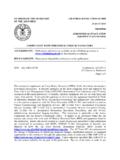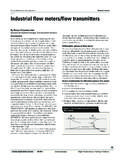Transcription of Dysphagia rehabilitation: Pathophysiology, evaluation and ...
1 Dysphagia rehabilitation: Pathophysiology, evaluation and treatment Stroke is the most important cause of morbidity and long-term disability and thus imposes an enormous economic and social burden. Oropharyngeal Dysphagia (OD) is a distressing condition that affects stroke patients, among others, and needs multidisciplinary management. It not only affects the social and psychological wellbeing of patients, but leads to malnutrition, aspiration pneumonia, prolonged hospital stay and premature death. Up to 20% of patients with stroke suffer from early aspiration pneumonia, a major cause of death during the first year after discharge. Malnutrition after stroke is another complication associated with poor outcome including death, dependency and institutionalization.
2 Despite its enormous impact on functional capacity, quality of life and survival, OD is both underestimated and underdiagnosed as a cause of major nutritional and respiratory complications in stroke patients. Dysphagia screening is not systematically performed in most countries and so patients go untreated. Moreover, current treatments are mostly based on nutritional supplements, bolus modifications and postural adjustments, directed at protecting patients from aspiration. Recently, new neurorehabilitation interventions have been developed and tested in post-stroke dysphagic patients, with the aim of promoting cortical neuroplasticity to recover the swallowing function. These new interventions are a breakthrough in Dysphagia treatment, moving from compensation to recovery, from adaptation to modulation, and could have a great impact on clinical outcome and quality of life of post-stroke dysphagic patients.
3 The aim of this session is to promote oropharyngeal Dysphagia in stroke patients and present its new reeducation and rehabilitation strategies. A paradigm shift in the diagnosis and treatment of sports medicine injuries The non-operative treatment of sports medicine injuries has transformed dramatically over the past several years. We have seen a paradigm shift in the array of options that the PM&R sports medicine specialist can offer patients. We will highlight conditions that were previously treated with standard physical therapy or corticosteroid injections and review emerging techniques for the most common conditions seen in a sports medicine practice. This workshop will review the latest treatment approaches for shoulder, hip, knee, ankle and foot injuries in athletes, from the recreational to the Olympic level participant.
4 Newer strategies for rehabilitation, botulin injections, biologic therapies, and gait retraining will be featured. For each injury we will highlight the use of musculoskeletal ultrasonography for both diagnosis and treatment of each condition. By incorporating the techniques from this workshop into their practice, PM&R sports medicine specialists will have more options to offer patients and help them to avoid the need for more invasive surgery. Supporting lifelong health and physical activity among individuals with cerebral palsy: international perspectives The expansion of the aging cerebral palsy (CP) population has led to a diversification of chronic disease, including increased prevalence of aging-related multimorbidity, psychological morbidity, and musculoskeletal frailty.
5 This workshop will integrate information based on research and ongoing clinical practice from the Stay-FIT Research Program in Canada, work pertaining to secondary health complications of chronic inactivity from the , the Healthy Lifestyle Program in The Netherlands, and population healthcare services research in the UK. Chronic disease burden in CP through the lifespan will be a central focus. In addition, viable interventions that may lessen the health burden of ageing with CP will be presented. Specifically, this workshop will bring together research from four countries focusing on underlying mechanisms and promotion of health-related fitness and physical activity of individuals with CP during adolescence, and transition into and throughout adulthood.
6 It is relevant for everyone interested in health-related fitness and activity in individuals with CP including researchers, therapists, physicians, and kinesiologists. We have recently completed various studies from the United States, The Netherlands, Canada and the United Kingdom which represent a substantial addition to the current body of literature pertaining to: (1) predictors of multimorbidity in young and middle-aged adults with CP, (2) longitudinal trends and disease free survival of chronic cardiometabolic diseases, such as diabetes, hypertension, hypercholesterolemia, etc., in large samples of adults with CP; (3) Incidence of noncommunicable diseases and related mortality in CP; and (4) scalable health related physical activity interventions for individuals with CP through the lifespan.
7 Lower limb amputations. Team work: prescription, fitting and training in pediatrics and adults. case presentations for discussion The idea is to talk about levels of amputations, fitting and alignments as well as stump pathology. Also, to discuss the prescription and the PT basic and advanced training. We will use different cases to discuss all of these options. We will stress the importance of team work in this type of pathology where PMR doctors, surgeons, CPOs and PT should play interactive and equally important roles We will show the different approaches for infants and adult patients in each of the above points. Cancer rehabilitation: an opportunity for clinical application and programmatic development With an estimated million new cancer cases diagnosed worldwide in 2012, and an anticipated million by 2030, cancer is now a global focus of care.
8 The 5-year survival rates for several oncological diagnoses continues to increase due to improvements with screening and treatment techniques. As individuals live longer with their cancer diagnoses, they are more susceptible to functional impairments that result from cancer and its treatment. The purpose of this proposal is to provide a 4-hour workshop in cancer rehabilitation to clinicians, introducing concepts relevant to clinical care and programmatic development. The course will consist of a 4-hour block addressing common considerations for effective treatment of cancer-related impairments and functional decline. Each session will be either diagnosis or impairment driven, and lecturers will be invited based on their subject matter expertise and international reputation.
9 Most presenters will be active members of the ISPRM and its special interest group in cancer rehabilitation. Each course speaker will provide post-lecture questions to focus the participants on important topics presented. Breakout sessions for case study and content discussion will be incorporated into the curriculum. Attendees and speakers will also participate in question and answer sessions after the completion of each block. As cancer continues to evolve into a chronic disease rather than a terminal condition, survivors experience significant impairment from cancer and its treatment. The application of rehabilitation principles to the oncology population provides previously underutilized services that may help improve function and quality of life.
10 The spastic foot management after stroke and traumatic brain injury: From assessment to surgery The spastic equinovarus foot (SEVF) is one of the most common disabling deformities observed among hemiplegic patients caused by calf spastic muscle overactivity, paresis and contracture. The aim of this long workshop will be to discuss about: 1) the appropriate assessment: clinical examination, diagnostic nerve block with anaesthetics and gait analysis 2) the rehabilitation modalities: physical therapy, orthotics, extracorporeal shock wave therapy 3) chemodenervation: botulinum toxin type A and neurolysis (alcohol phenol) 4) neurosurgery: selective neurotomy 5) orthopaedic surgery: tendon lengthening and transfer, bone surgery 6) treatment strategies: how to choose the optimal treatment option Experts from across the world including PMR specialist, neurosurgeon and surgeon will present their experience based on the scientific evidence.





